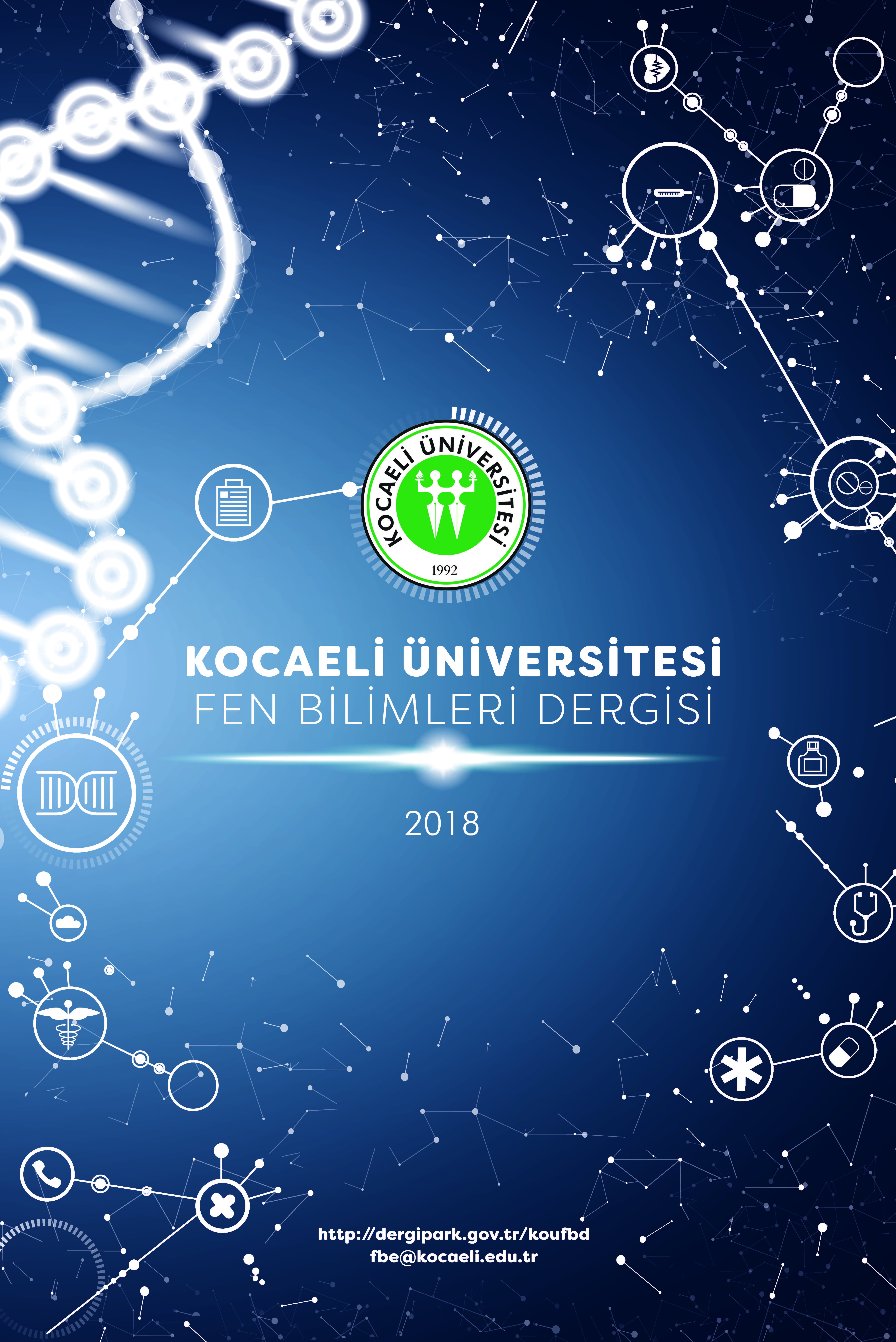Bims Agregalı ve Genleştirilmiş Perlit Agregalı Hafif Kompozit Harçların Özelliklerinin Deneysel Olarak İncelenmesi
Hafif agregalar kullanılarak; hafif beton, duvar bloğu, sıva ve şap gibi bağlayıcısı çimento olan birçok hafif ve yalıtımlı kompozit ürün elde edilmektedir. Özellikle genleştirilmiş perlit ve bims agregaları bu kompozitlerde kullanılan agrega türlerinden en popüler olanlarıdır. Bu çalışmada hacimsel olarak %0, 25, 50, 75 ve 100 oranlarında genleştirilmiş perlit ve bims agregaları ile m3‘te 250 kg çimento kullanılarak üretilen kompozit harçlar kullanılmıştır. Elde edilen 5 tip numune üzerinde; kuru birim ağırlık, su emme, basınç dayanımı, kılcal su emme ve ısıl iletkenlik testleri yapılmıştır. Elde edilen sonuçlara göre bims agregası arttıkça basınç dayanımı, su emme ve kılcallık özellikleri olumlu etkilenirken, kuru birim ağırlık ve ısıl iletkenlik özellikleri olumsuz etkilenmiştir. Özellikle genleştirilmiş perlit ve bims agregalarının %50 oranlarında karıştırılmasının en iyi sonuçları verdiği gözlenmiştir.
Anahtar Kelimeler:
Hafif ve yalıtımlı kompozit harç, çimento, genleştirilmiş perlit, bims agregası
___
- Rodrigues F. A.,, Joekes I., (2011). Cement industry: sustainability, challenges and perspectives. Environmental Chemistry Letters, 9(2), 151-166.
- Sébaıbi Y., Dheilly R. M., Quéneudec M., (2004). A study of the viscosity of lime–cement paste: influence of the physico-chemical characteristics of lime. Construction and Building Materials, 18(9), 653-660.
- Robery P., Shaw M. J., (1997). Materials for the repair and protection of concrete. Construction and building materials, 11(5-6), 275-281.
- Mosquera M. J., Benı́tez D., Perry S. H., (2002). Pore structure in mortars applied on restoration: Effect on properties relevant to decay of granite buildings. Cement and concrete research, 32(12), 1883-1888.
- Enevoldsen J. N., Hansson C. M., Hope B. B., (1994). The influence of internal relative humidity on the rate of corrosion of steel embedded in concrete and mortar. Cement and concrete research, 24(7), 1373-1382.
- Fernandes V., Silva L., Ferreira V. M., Labrincha J. A., (2005). Influence of the kneading water content in the behaviour of single-coat mortars. Cement and concrete research, 35(10), 1900-1908.
- Yildirim S. T., Kiraz E., (2013). Investigation of binders composition and curing condition of masonry samples with fly ash and expanded pearlite. Cement Wapno Beton 18.80, nr 3: 169-177.
- Keskin F. Ş., Yildirim S. T., (2016). Investigation of Utilization of Perlite and Bottom Ash for the Insulation Mortar by Using Design of Experiment via Taguchi Method. El-Cezeri Journal of Science and Engineering, 3(1).
- Uluer O., Karaağaç İ., Aktaş M., Durmuş G., Ağbulut Ü., Khanlari A., Çelik D. N., (2018). Genleştirilmiş perlitin ısı yalıtım teknolojilerinde kullanılabilirliğinin incelenmesi. Pamukkale University Journal of Engineering Sciences, 24(1).
- Topçu İ. B., Işıkdağ B., (2008). Effect of expanded perlite aggregate on the properties of lightweight concrete. Journal of materials processing technology, 204(1-3), 34-38.
- Turhan Ş., Gündüz L., (2008). Determination of specific activity of 226Ra, 232Th and 40K for assessment of radiation hazards from Turkish pumice samples. Journal of environmental radioactivity, 99(2), 332-342.
- Zukowski M., Haese G., (2010). Experimental and numerical investigation of a hollow brick filled with perlite insulation. Energy and Buildings, 42(9), 1402-1408.
- Uygunoğlu T., Keçebaş A., (2011). LCC analysis for energy-saving in residential buildings with different types of construction masonry blocks. Energy and Buildings, 43(9), 2077-2085.
- Yüksek Í., (2015). The evaluation of building materials in terms of energy efficiency. Periodica Polytechnica. Civil Engineering, 59(1), 45.
- Sariisik A., Sariisik G., (2012). New production process for insulation blocks composed of EPS and lightweight concrete containing pumice aggregate. Materials and structures, 45(9), 1345-1357.
- Ochs F., Heidemann W., Müller-Steinhagen H., (2008). Effective thermal conductivity of moistened insulation materials as a function of temperature. International Journal of Heat and Mass Transfer, 51(3-4), 539-552.
- Doğan-Sağlamtimur N., Güven A., Bilgil A., (2018). Physical and Mechanical Properties of Cemented Ash-Based Lightweight Building Materials with and without Pumice. Advances in Materials Science and Engineering, DOI: 10.1155/2018/9368787
- ASTM C109/C109M-05. Standard test method for compressive strength of hydraulic cement mortars (using 2-in. or [50 mm] cube specimens). ASTM International; 2005.
- ASTM, C1585-04. Standard test method for measurement of rate of absorption of water by hydraulic-cement concretes. ASTM International, 2004.
- TS EN 12664 (EN 12664)Thermal Performance of Building Materials and Products – Determination of Thermal Resistance by Means of Guarded Hot Plate and Heat Flow Meter Methods – Dry and Moist Products of Medium and Low Thermal Resistance, Turkish Standards Institution (2009).
- Yayın Aralığı: Yılda 2 Sayı
- Başlangıç: 2018
- Yayıncı: Kocaeli Üniversitesi
Sayıdaki Diğer Makaleler
Kocaeli İlindeki Süne Yumurta Parazitoitleri ve Etkinlikleri
Şener ATAK, Fevzi UÇKAN, Erhan KOÇAK, Havva Kübra SOYDABAŞ
Emrah ÜSTÜN, Emin Selman AKÇAMUR, Erdal Mustafa YEĞİN
İndüksiyonla Isıtma Uygulamaları için Bir Seri Rezonans İnverter Topolojisi ve Simülasyonu
NRW Metodu İle Malzemelerin Elektromanyetik Parametrelerinin Bulunması
Merve DURMUŞ, Alp Oral SALMAN, Tuğba Şeyda YILDIRIM
